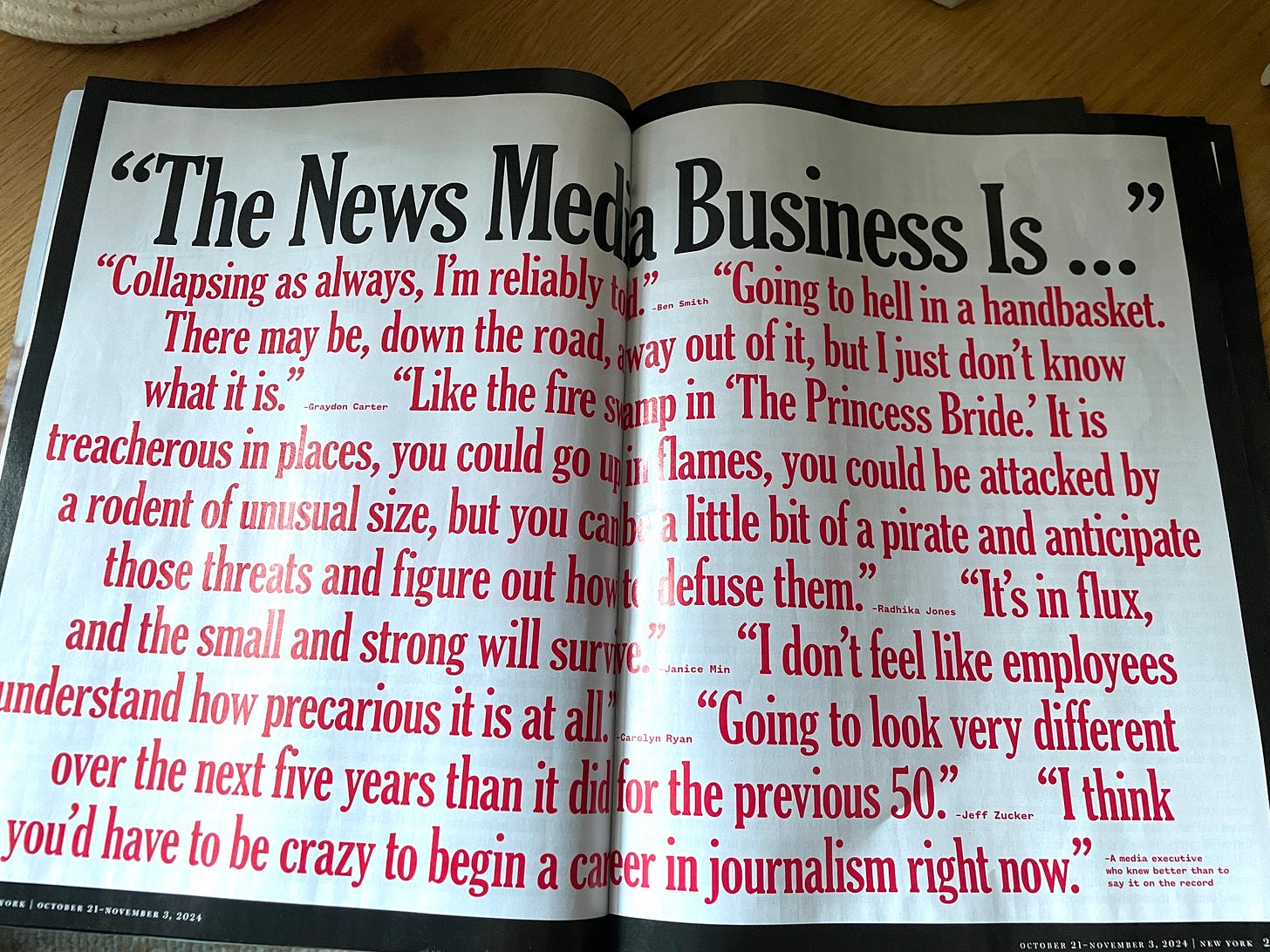“This new generation is like, I’m totally cool with having 9,000 die-hard fans.”
Those who read New York’s new cover story from the Power Issue—all about the future of media—are familiar with this anonymous quote. A lot of the “elites” interviewed (on and off the record) had a hard time wrapping their heads around the newsletter economy. But a dedicated fanbase is exactly what keeps places like Substack so alive; even with this modest newsletter, I can reach a larger audience than a lot of the stories I’ve had published on major websites. It’s honestly so gratifying—and something I think execs can’t, or refuse to, understand.
Admittedly, the money hasn’t caught up yet. Joanna Coles is quoted: “My understanding of [Substack, etc.] is that 5 percent of the writers are making 90 percent of the money, which I don’t find surprising.” It’s a fair point! But let’s compare this to traditional media, where the executives make 90 percent of the money. I’ll take a handful of writers any day.
There were some dishy moments, but in general, the cover story left me confused and anxious. Like, we know media is screwed. Now what? No one seemed to offer any real solutions or ideas. We’re told repeatedly the ad system is broken, and later that news startup Semafor’s big plan is to…sell ads. Coolcoolcool.
If you haven’t read it, it’s hard to summarize as it’s essentially a collection of quotes, loosely constructed by topic. There were a lot of conflicting opinions. For example, a section on print media opens with a quote from Puck’s Jon Kelly talking about how print is a relic of the past. Then it goes on to quote several people who say it’s a “luxury product” and they cannot get celebrities/sell ads without it. So which is it? YOU decide!1
Personally, I’ve been thinking about the return of print a lot. For the past couple of months especially, brands have been churning their own mini-newspapers, zines, and catalogs. J.Crew, Jones Road, Summer Fridays, and more come to mind.
But those are all CPG brands, essentially making facsimiles of print products. They aren’t actually buying ads. Of course, there are some exceptions (
kindly brought my attention to this article by Amanda Mull). But what strikes me is that nobody brought up the mega-popularity of BOOKS, and how/why magazine publishing has not been able to capture any of that magic. I don’t have a solution, but I’m not paid to. This group quite literally is.There’s another anonymous quote I can’t not address:
Keep reading with a 7-day free trial
Subscribe to Gatekeeping to keep reading this post and get 7 days of free access to the full post archives.



